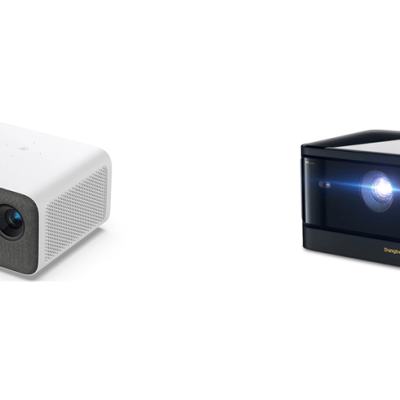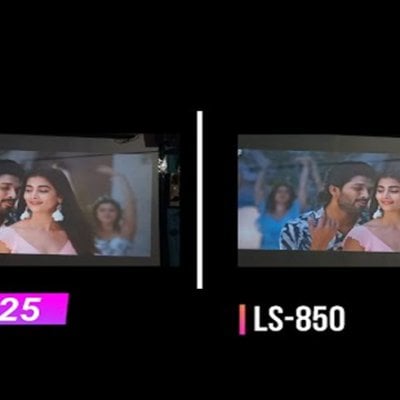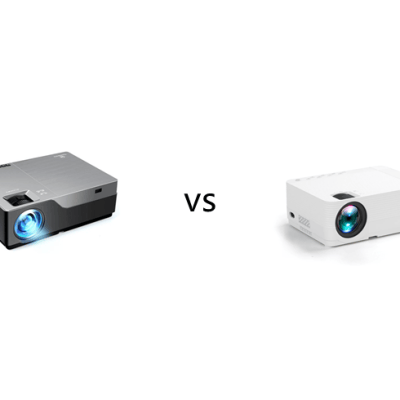
UST laser projectors are increasingly popular in the US market. In this post, we will compare the two popular UST projectors, Hisense 100L5G and Epson LS800, helping you to know more details about their differences.
Hisense 100L5G vs Epson LS800
Overview
By means of the side-by-side comparison below, you can have an overall knowledge of the differences between Hisense 100L5G and Epson LS800. In the next section, we will compare the two projectors in detail.

Design
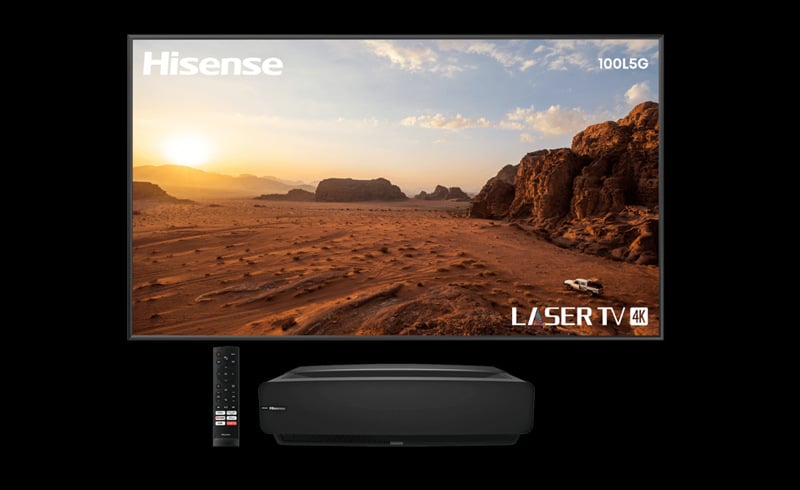

Hisense 100L5G has contrasting colors of silver and black. Epson LS800 has two option colors, including black and white.
In terms of appearance, Hisense 100L5G and Epson LS800 have a typical shape and outer design like most UST projectors. Epson LS800 has four adjustable feet so that users can adjust the height of the projector conveniently.
Regarding size and dimension, Hisense 100L5G measures 21.5” x 13.6” x 6.2” while Epson LS800 measures 27.4″ x 13.4” x 6.2″. That’s to say, Hisense 100L5G is slightly bigger.
Throw Ratio
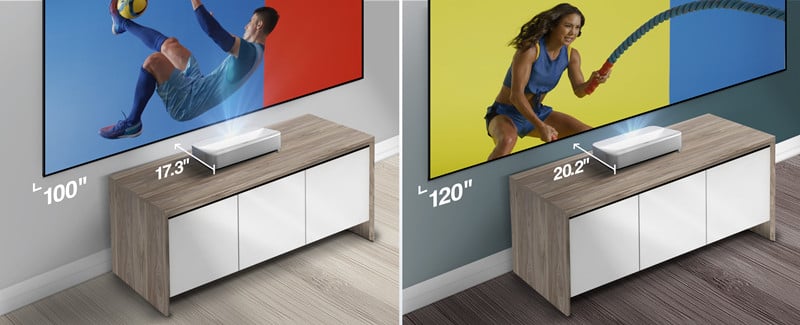
Hisense 100L5G has a fixed throw ratio of 0.25:1 while Epson LS800 has a flexible throw ratio of 0.16 – 0.40:1. Throw ratio is a decisive parameter for UST laser projectors, the shorter the throw, the shorter the throw distance the projector requires for giant screen size. A UST projector with a shorter throw helps you to save more space.
You can use this projector calculator to calculate the accurate distance and projection size.
| Models | Hisense 100L5G | Epson LS800 |
| Throw Ratio | 0.25:1 | 0.16 – 0.40:1 |
Light Source
Hisense 100L5G and Epson LS800 are both powered by laser. Compared to lamp-based projectors, laser projectors are better in terms of color performance and lamp life.
Though they both use the laser as the light source, the two projectors are different in terms of light source type and lamp life. Hisense 100L5G adopts Blue Laser+ Phosphor Color Filter while the Epson LS800 uses a laser diode.

Hisense 100L5G has a longer lamp life of 25,000 hours, longer than Epson LS800’s 20,000 hours. The lamp life is key to the life span of a projector.
Image
The two projectors have the same 4K resolution but they are different in terms of display tech, image brightness, contrast, and image size.
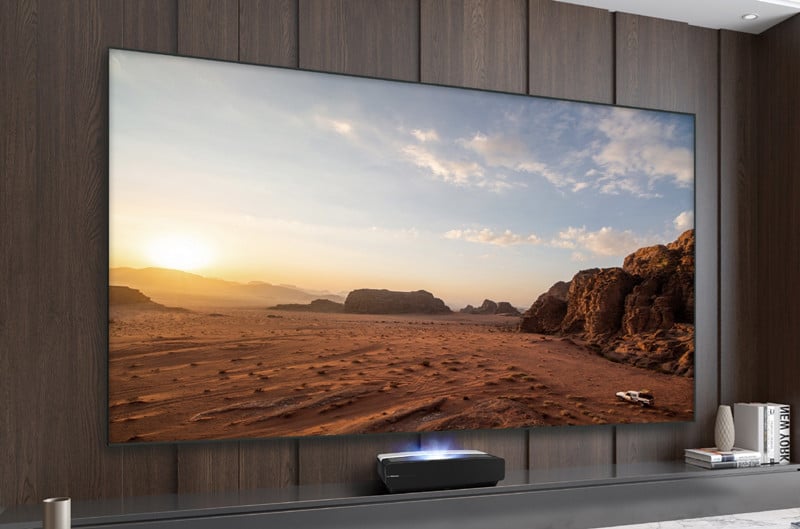
Firstly, the display tech. Hisense 100L5G adopts DLP technology while Epson LS800 uses 3LCD display technology. Compared to DLP projectors, 3LCD projectors are not vulnerable to the rainbow effect but it has a bulkier size.
As for image brightness, Hisense 100L5G has 2,700 ANSI lumens while Epson LS800 has 4,000 ANSI lumens. That is to say, Epson LS800 is much brighter and performs better during the daytime. If the image brightness is too low, you can’t use the projector under strong ambient light.
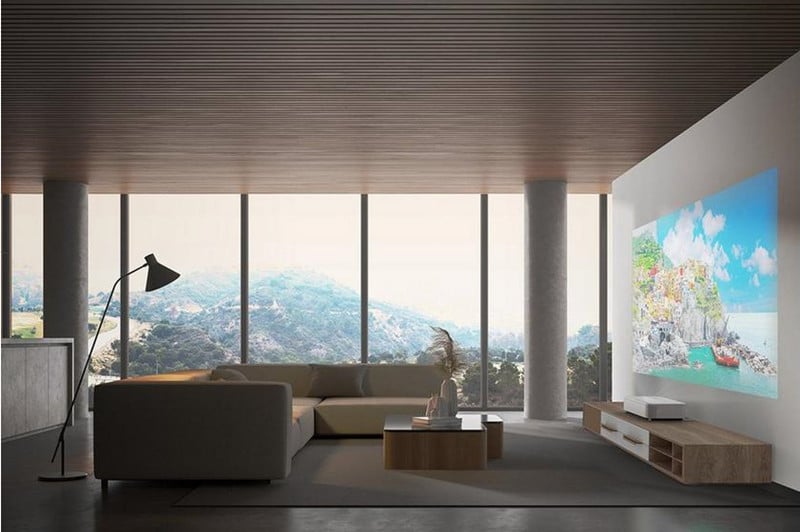
In terms of image contrast, Hisense 100L5G has 1,000,000:1 while Epson LS800 has 2,500,000: 1. In other words, Epson LS800 is better in image contrast.
Regarding image size, Hisense 100L5G has a fixed image size of 100 inches while Epson LS800 has an adjustable image size of 80-150 inches.
System

The two projectors are both powered by Android TV and have built-in Google services, such as the Google Play store and Google Assistant. You can enjoy streaming channels including HBO, Disney +, YouTube, Hulu, ESPN, and more. The App store enables us to download hundreds of apps.
Connectivity
Hisense 100L5G and Epson LS800 both support Wi-Fi and Bluetooth, meaning that you can connect them to external devices wirelessly.

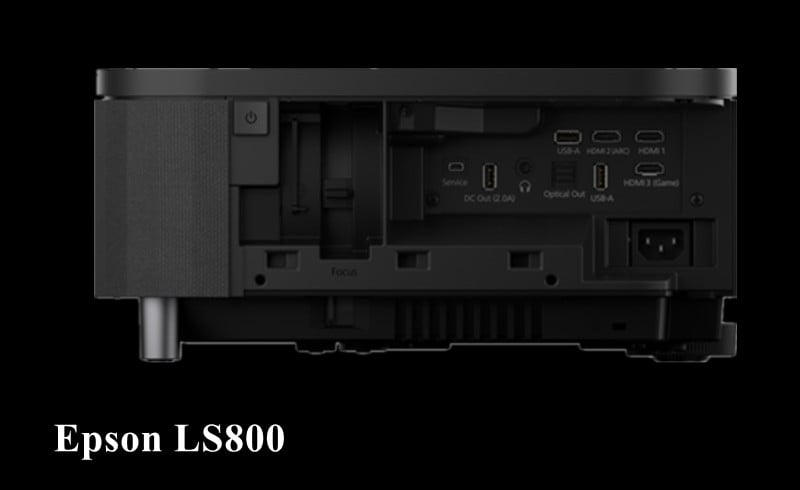
As for interfaces, the two projectors are both equipped with versatile interfaces, but they are different in terms of HDMI versions. Hisense 100L5G has HDMI 2.1 while Epson LS800 has HDMI 2.0. In addition, Hisense 100L5G has a LAN interface while the Epson counterpart doesn’t.
Compared with HDMI 2.0, HDMI 2.1 performs better in compatibility and bandwidth. Check our previous post on HDMI vs HDCP and gets a full introduction to HDMI versions.
| Models | Hisense 100L5G | Epson LS800 |
| Interfaces | 2 x DMI 2.1 1x DMI 2.0 1xLAN 1x USB 3.0 1x USB 2.0 1x Optical audio output | 3x USB 2.0-A 1x USB 2.0 Type B 1x Jack Plug out HDMI ARC 3x HDMI 2.0 1x S/PDIF Optical Out 1x Mini Stereo Out |
Audio
The audio effect is also a key factor for a pleasing and immersive viewing experience. As for built-in speakers, Hisense 100L5G has a built-in speaker of 30W in total, while Epson LS800 has 20W speakers in total, including 2 full-range 5 W speakers and one 10 W subwoofer. That is to say, Epson LS800 is less powerful in sound.
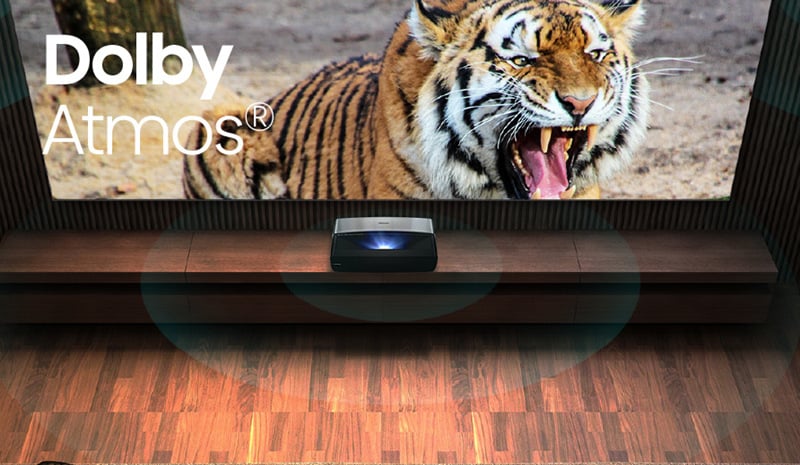
As for audio tech, Hisense 100L5G supports Dolby Atmos and Dolby Digital, but Epson LS800 doesn’t. Dolby Atmos is a surround sound technology developed by Dolby Laboratories, which can enhance the audio effect greatly.
| Models | Hisense 100L5G | Epson LS800 |
| Audio Tech | Dolby Atmos, Dolby Digital | / |
| Speakers | 30W | 20W |
Pros and Cons
Hisense 100L5G
Pros
- 4K resolution
- Longer Lamp Life
- Powerful Speakers
- Dolby Atmos
Cons
- Fixed Image Size
Epson LS800
Pros
- High Brightness
- 4K resolution
- Shorter Throw
- 150″ Screen
- Lower Cost
Cons
- No 3D
- Less Powerful Speaker
- No HDMI 2.0
Conclusion
The two projectors are both excellent UST projectors. Hisense 100L5G is better in light source, connectivity, audio, and smart features, while Epson LS800 performs better in throw ratio, image size, and cost-effectiveness.
Related Posts


